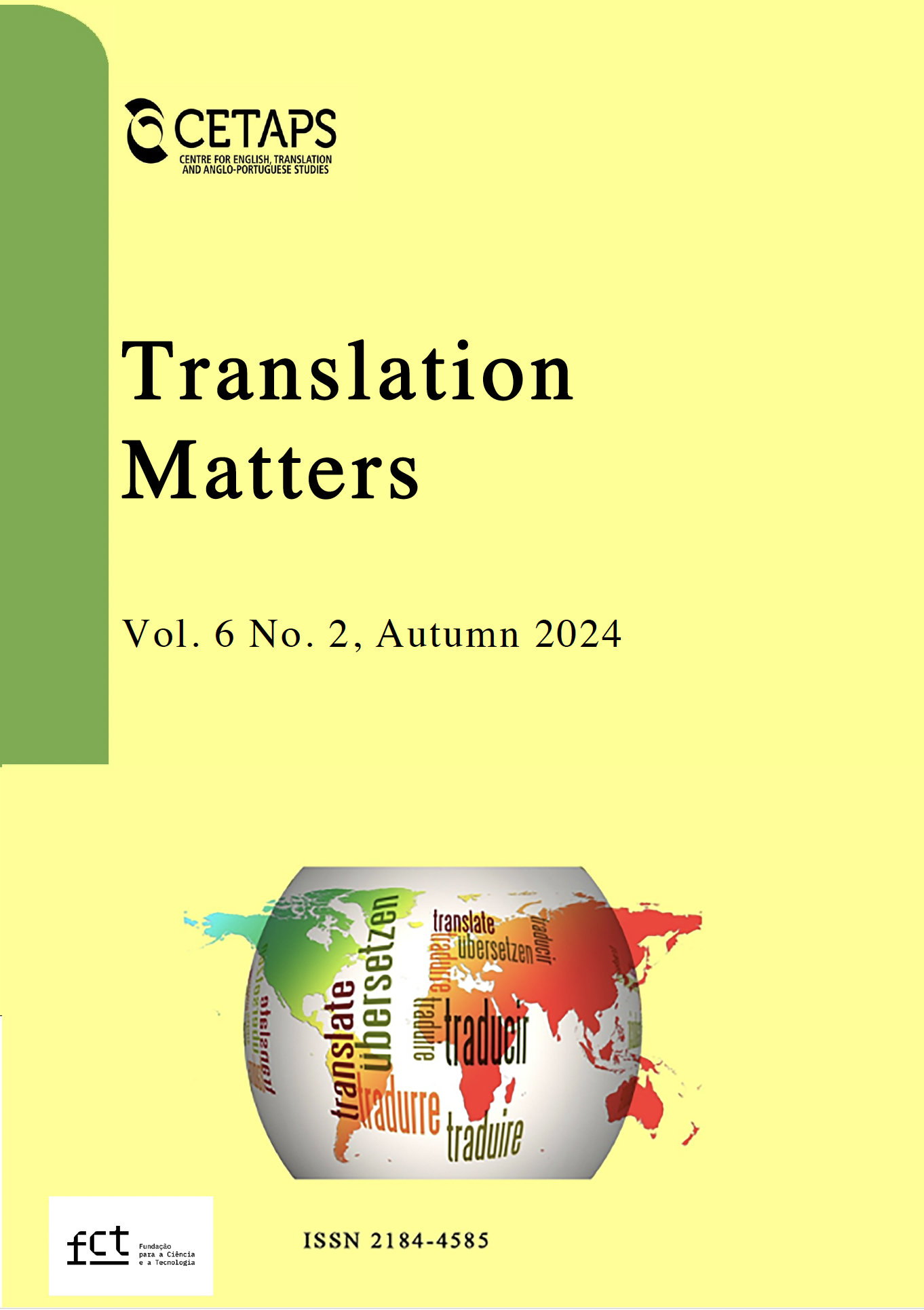Translation for solo voice: John Cage’s multilingual visual melodies
Palavras-chave:
John Cage, Solo Voice, Intersemiotic Translation, Multimodal Adaptation, Creativity, Interdisciplinarity, Music, Literature, IntertextualityResumo
John Cage's interdisciplinary compositions have been studied more from a musical than a literary perspective. The latter, as this paper seeks to demonstrate, is of particular interest to address certain concepts related to the latest trends in Translation Studies (Campbell and Vidal, 2025, 2024, 2019; Bennett, 2024; Vidal Claramonte, 2024, 2017; Blumczynski, 2023; Minors, 2023; Meylaerts and Marais, 2023; Lee, 2022; Gambier and Van Doorslaer, 2021). In this sense, this paper aims to offer a panoramic overview of this relationship between vocal scores and translational practices through the analysis and translation into Spanish of three of Cage's works: Aria (1958), Solo for Voice 35 (1970) and Sonnekus2 (1985). Despite the formal specificities of each of these works for solo voice, all of them constitute, from different perspectives, a clear line of study to delve deeper into the current paradigm shift of Translation Studies as a discipline. In addition to sounds and visuals, the literary nature of these three works means that translation goes beyond linguistic barriers and experiments with other semiotic systems, tackling concepts such as originality, authorship, interpretation and representation.
KEYWORDS: Solo Voice; Intersemiotic Translation; Multimodal Adaptation; Interdisciplinarity; Intertextuality; Interdisciplinarity
Downloads
Publicado
Edição
Secção
Licença
Direitos de Autor (c) 2024 Translation Matters

Este trabalho encontra-se publicado com a Licença Internacional Creative Commons Atribuição 4.0.








